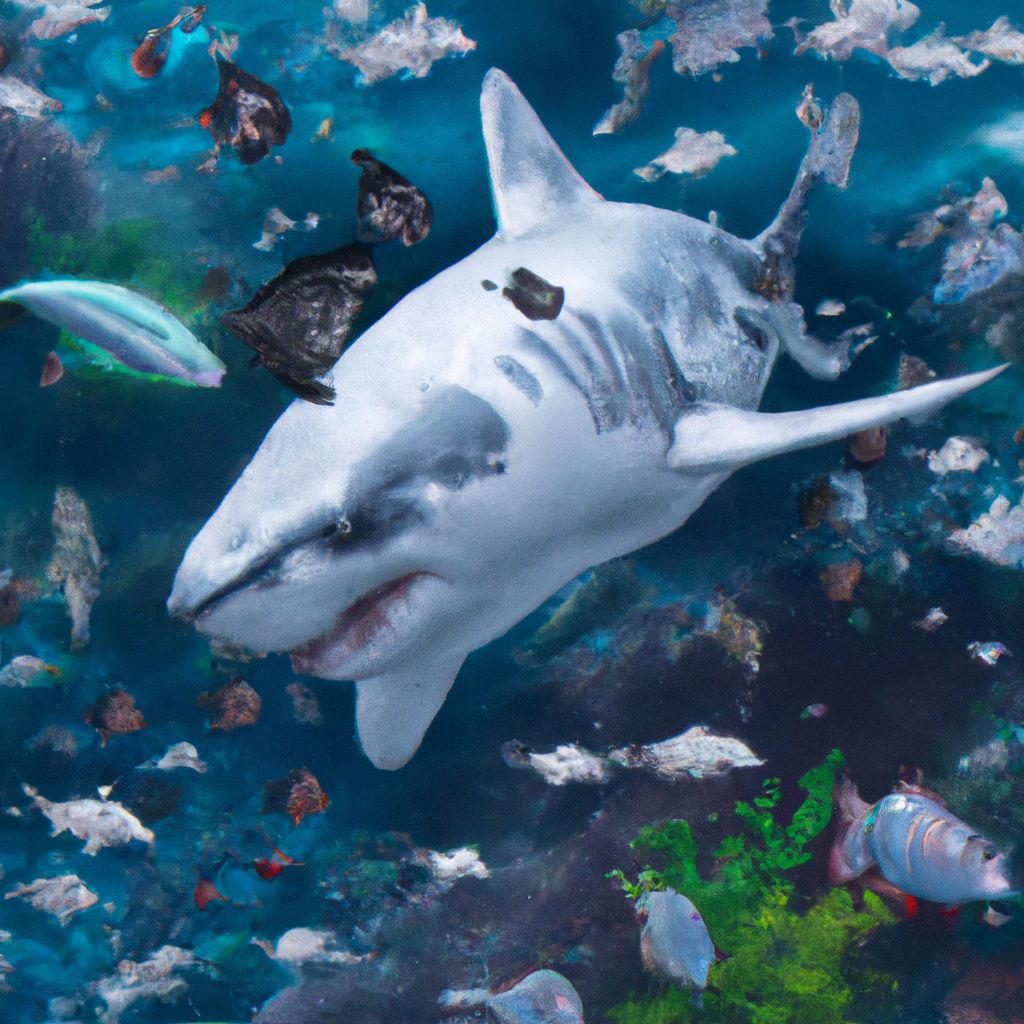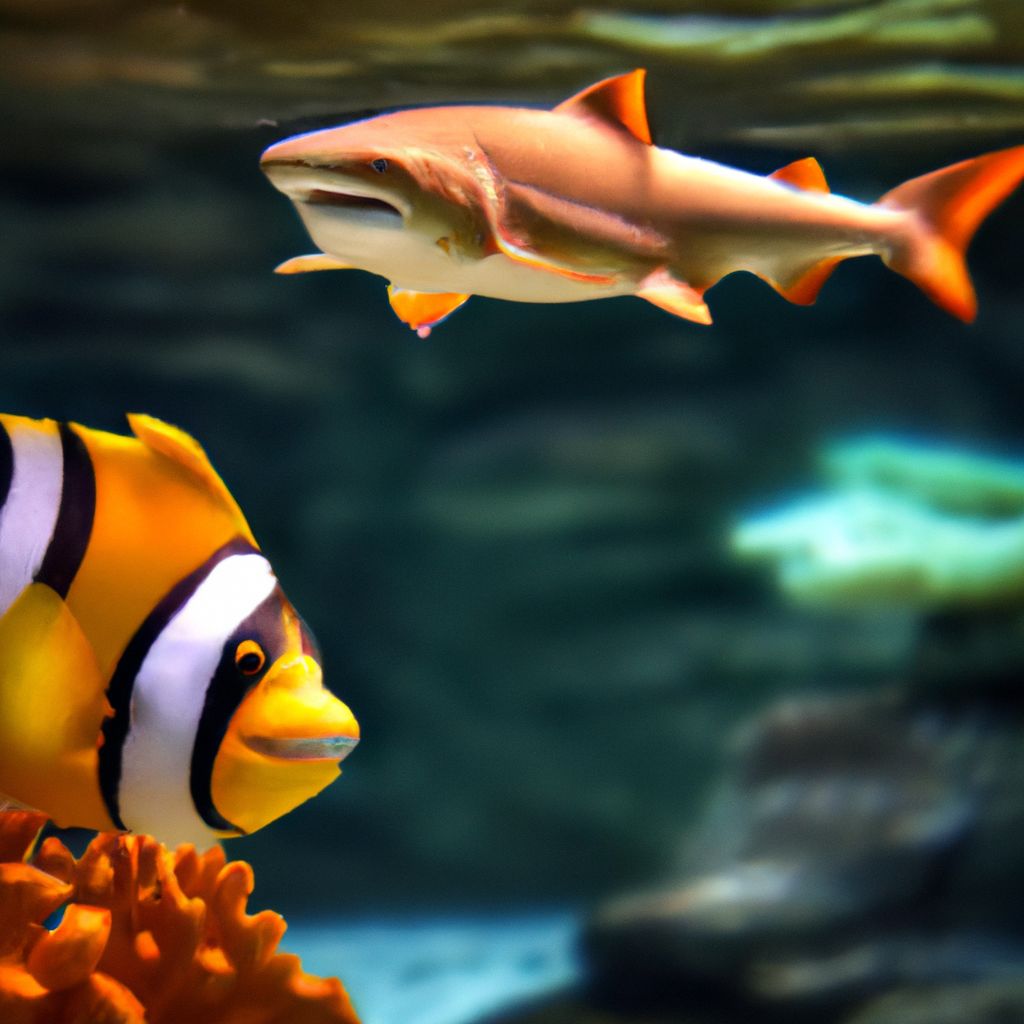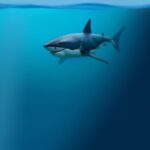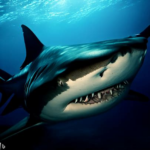
The Great White Shark is a true apex predator! With their powerful bodies and precise hunting skills, they sit atop the food chain. Not only are they a force to be reckoned with, but their presence influences the behavior and distribution of marine life.
Discover their fascinating role in the oceanic ecosystem. Appreciate the delicate balance they help maintain and the respect they command. Join us on an unforgettable journey to unlock the mysteries of the Great White Shark’s position at the top of the food chain.
Key Takeaways
- The great white shark is at the top of the food chain in the ocean, meaning it has no natural predators.
- The primary food source for great white sharks is seals and sea lions, which are found in abundance along coastal areas.
- Great white sharks are known for their powerful jaws and sharp teeth, which allow them to easily catch and consume their prey.
- While seals and sea lions make up the majority of their diet, great white sharks are opportunistic feeders and will also consume other marine animals such as fish, dolphins, and even other sharks.
- The hunting behavior of great white sharks is characterized by stealth and surprise, as they often approach their prey from below and launch themselves out of the water to capture it.
- The presence of great white sharks in an ecosystem is crucial for maintaining a balanced food chain, as they help control the population of their prey species.
- Human activities such as overfishing and habitat destruction can disrupt the great white shark’s food chain, leading to negative impacts on the overall health of the ocean ecosystem.
- Conservation efforts are important to protect great white sharks and ensure the sustainability of their food chain, as they play a vital role in maintaining the biodiversity of the ocean.
The Great White Shark: A Top Predator
The Great White Shark is the ultimate predator of the sea. It has unmatched hunting skills and phenomenal power. Its body is grey on top and white underneath, with a torpedo-like shape and strong muscles for agility and speed. It stalks its prey silently then launches an explosive burst of speed and uses its keen sense of smell to detect wounded prey. Its diet includes seals, sea lions, fish, and other sharks. It even has the ability to regulate its body temperature in cooler waters and detect electrical signals with electroreception.
For an unforgettable experience, consider booking a guided shark diving adventure to witness these incredible predators in their natural habitat. Great whites have a buffet-style diet, where everything swims until they become the main course!
The Great White Shark’s Prey

Great White Sharks, apex predators, love a varied menu. Let’s take a closer look at their diet and hunting habits.
They are alpha predators – that means they prey on marine mammals like seals, sea lions, and dolphins for energy and fat.
They don’t just stick to mammal meals. Tuna, rays, and many types of bony fish, like salmon and mackerel, are also on the menu. Great Whites have powerful jaws and sharp teeth, so they can take down sizable prey with ease.
You can even find them chowing down on seabirds that get too close to the surface. This shows how these predators can adapt to whatever food sources are available.
The Importance of the Food Chain
The food chain is vital to keeping ecosystems in balance. It’s a network that moves energy and nutrients between organisms. Without a functional food chain, ecosystems would collapse, affecting all living things.
The Great White Shark is an apex predator. By eating seals, sea lions, and other marine mammals, they control their numbers and stop one species from taking over. This keeps the ecosystem in equilibrium.
The Great White Shark also affects marine life indirectly. Their presence makes prey scared, so they change their feeding patterns and avoid certain areas. This helps keep biodiversity by stopping one species from dominating.
To understand the importance of the food chain, remember it’s interconnected. Every organism plays an important role, from producers to predators. Appreciating this interdependence helps us understand how important it is to protect our ecosystems, which have been disrupted by human activities. It’s like playing Jenga with all the sharks’ meals crumbling away.
The Impact of Human Activities on the Great White Shark’s Food Chain

Humans can have a great effect on the food chain of the Great White Shark. By overfishing, polluting oceans, and destroying habitats, they can upset the balance that these sharks need to survive. This can make prey species scarce, making sharks search for new sources of food or go to new areas for food.
Overfishing is one way humans affect the food chain. Humans catch fish for themselves, taking them out of the ecosystem. With fewer fish, the natural energy flow from prey to predator is disrupted. Sharks may struggle to find enough to eat, leading to a decline in their population.
Pollution can also hurt the food chain. Chemicals and waste dumped into the ocean can harm prey and their habitats. This can reduce the food sharks have available. Pollutants can build up in shark tissues, making them sick or killing them.
Habitat destruction caused by humans can also change the food chain. These sharks need healthy habitats to find prey and reproduce. When these are gone or changed, it’s harder to get food or have babies.
One example of this is off California’s coast in 1994. Sea otters were lost due to pollution and hunting. This made sea urchin numbers grow. They ate kelp forests, which were habitats for small fish that sharks eat. As kelp forests went down, so did shark food sources, leading to their population going down.
Humans can have a big effect on the Great White Shark’s food chain. We can work to save this species and keep our oceans in balance if we recognize and address the issues. Conservation is like a bouncer at a seafood restaurant, making sure only the best food is on the shark’s menu.
Conservation Efforts to Protect the Great White Shark’s Food Chain
The majestic Great White Shark relies on conservation efforts to protect their food chain. Regulations, marine protected areas, sustainable fishing methods, pollution control measures, and education are all key elements in preserving this delicate balance! Every action counts; support organizations that promote marine conservation and choose sustainable seafood options to help protect the food chain.
The food chain in the ocean is like a game of dinner roulette, with the Great White Shark being the daring gambler who seeks its next meal.
Frequently Asked Questions
1. What is the position of the great white shark in the food chain?
The great white shark is an apex predator, which means it is at the top of the food chain. It preys on a variety of marine animals and is not typically hunted by any other species.
2. What do great white sharks eat?
Great white sharks primarily feed on fish, such as tuna, seals, sea lions, and other marine mammals. They have a diverse diet and are known to consume sea turtles, smaller sharks, and even seabirds.
3. How do great white sharks hunt?
Great white sharks are ambush predators. They use their incredible speed and agility to surprise their prey from below. Once they spot a potential meal, they launch a powerful attack, often breaching the water’s surface.
4. Are great white sharks cannibalistic?
Although rare, cannibalism has been observed among great white sharks. Some larger individuals may prey on smaller or weaker members of their own species, especially during scarcity of other food sources.
5. Do great white sharks have any natural predators?
As apex predators, adult great white sharks have no natural predators. However, larger sharks, such as the orca (killer whale), may occasionally prey on juvenile or injured great white sharks.
6. How does the decline of the great white shark population affect the food chain?
The decline of great white sharks can have significant impacts on the marine food chain. As top predators, they help regulate the populations of their prey, preventing their unchecked growth. Without them, there can be imbalances leading to negative ecological effects.
Conclusion
Research on the great white shark food chain has revealed much about marine ecosystems. Scientists have learnt about the role of great white sharks in preserving biodiversity.
These apex predators consume a wide range of prey, from seals to smaller fish. This illustrates their adaptability and opportunistic nature. Even when preferred prey is scarce, they can survive by eating other fish species.
An interesting fact about great white sharks is they are portrayed as ruthless man-eaters. Humans are rarely attacked and this is usually due to mistaken identity or curiosity. Knowing this helps to dispel myths about these creatures.
References
White shark | Size, Diet, Habitat, Teeth, Attacks, & Facts | Britannica
Shark on UK plates highlights trade in endangered species – BBC News



